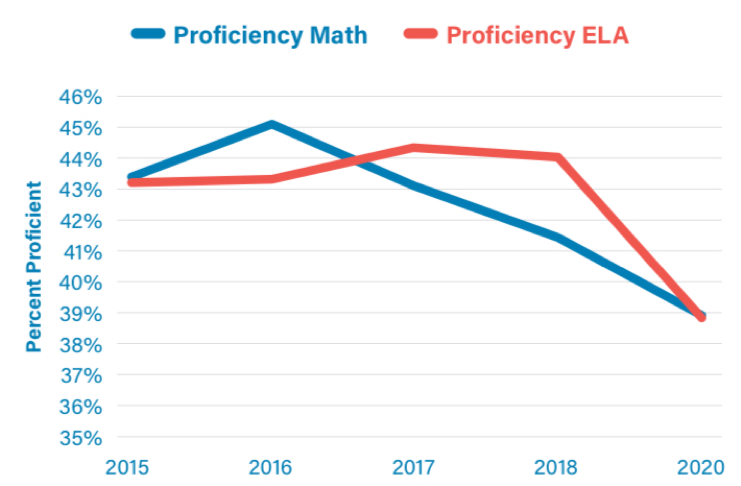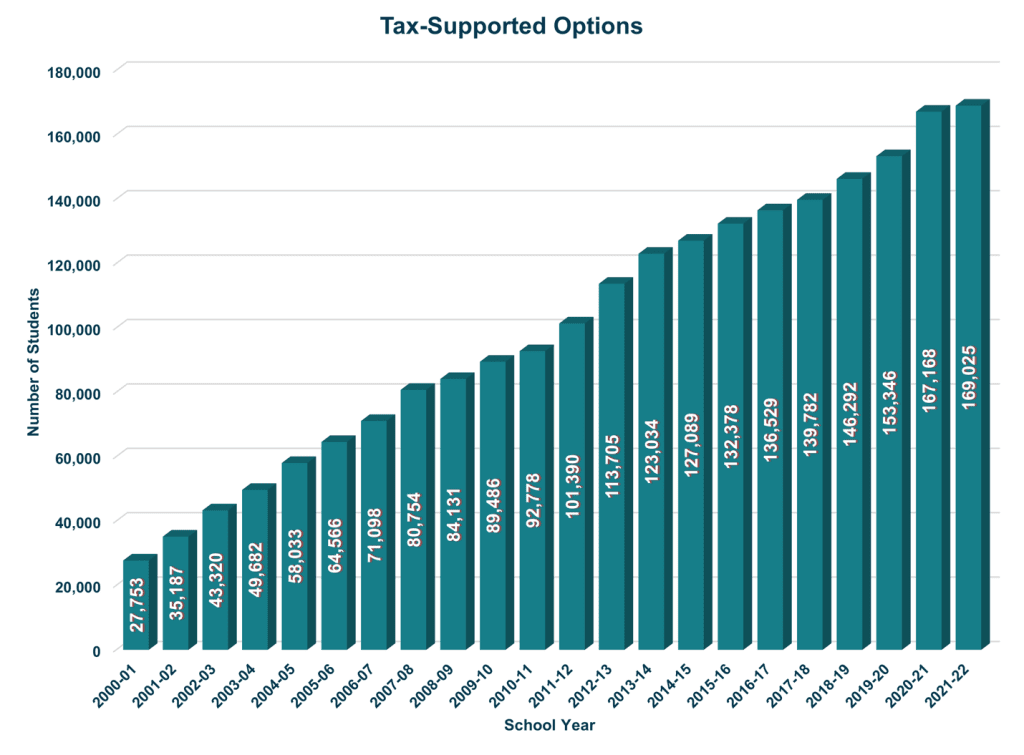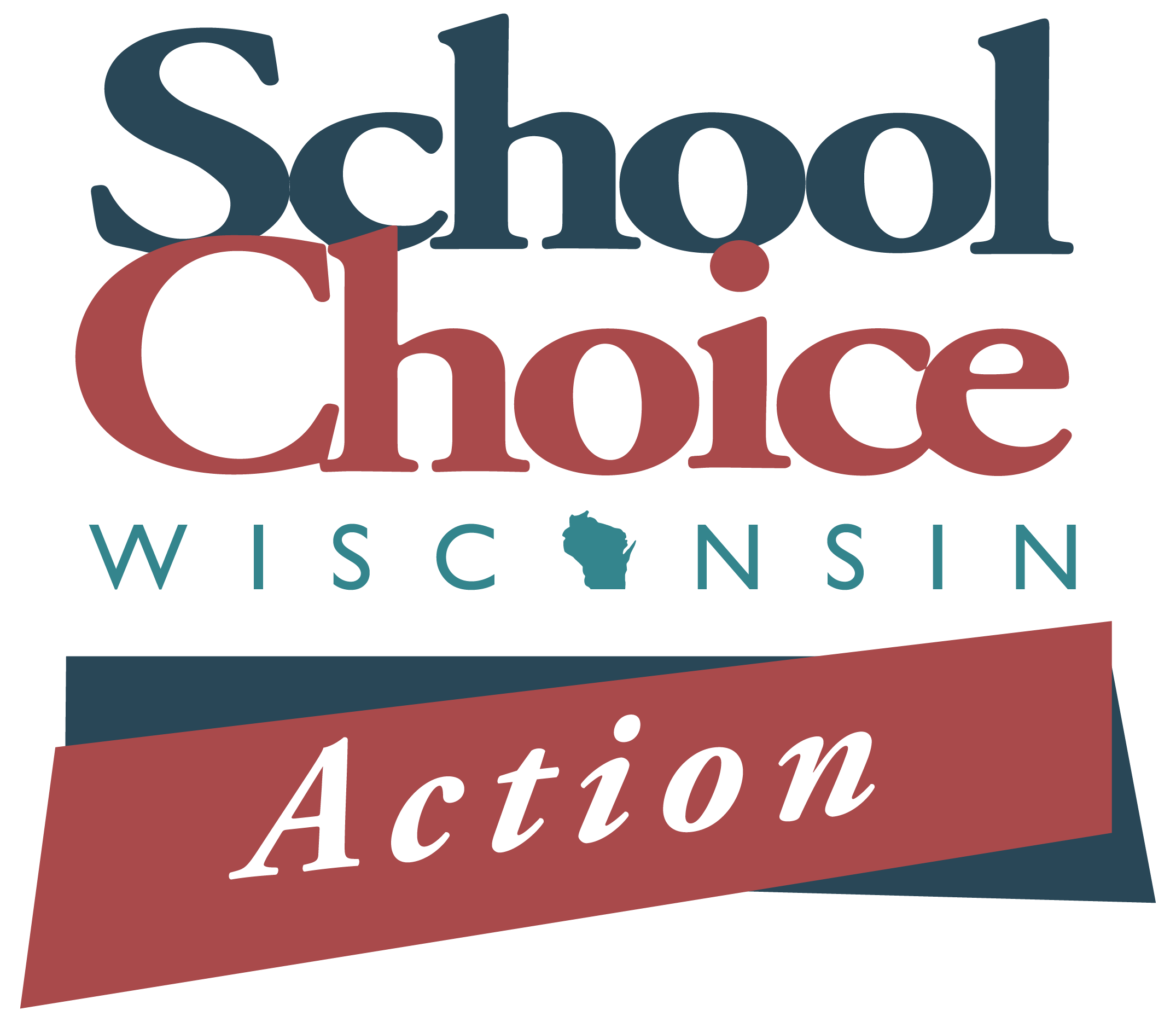Parent Choice in WI
Defining the Problem
Look no further than Wisconsin parents to understand the problem. Growing numbers are dissatisfied with traditional public school options. This is confirmed by reliable polling and surging use of tax-supported K–12 options (see What We’ve Learned from Polling and Tax Supported Education Options in Wisconsin).
Many factors explain their concerns. These include disruption caused by COVID restrictions and concern with the content, values, and tone of the education presented in many public school classrooms. Safety concerns, especially in urban settings, also play a role.
Low — and declining — academic performance further explains the search for options.
As shown below, more than 60% of public schools students tested below proficiency in math and English last year.* This is the first time proficiency has fallen this low. It helps explain why thousands of students entering University of Wisconsin campuses require remedial classes.
Proficiency Over Time, All Public Schools

(Graphic courtesy Wisconsin Institute for Law & Liberty. See WILL’s “Apples to Apples” report for more detail.)
Some try to pivot from these results by citing Wisconsin’s ranking among the states. This obscures the picture. For example, while Wisconsin ranks higher than many other states on eighth-grade math, this is only because national proficiency levels there are even lower. In truth, there is a serious national proficiency challenge.
By comparison, students using options generally outperform those in traditional public schools. See Results.
About Parent Choice in Wisconsin
Until 1990, tax-supported school choice in Wisconsin was limited largely to traditional public schools in a family’s community of residence.
Programs enacted in the 1990s (and since expanded) give families three new options: (1) private schools, (2) public charter schools, and (3) the open enrollment program allowing transfers to non-resident public schools.
Despite many barriers, there has been substantial growth since 2000 in the use of these new options. Statewide, nearly one in five families use them.

Information on the following pages describes the various options. Policy recommendations are addressed in a separate section.
Private School Choice
Four programs provide tax support for parents to enroll children in private schools.
| Milwaukee | Racine | State (Outside Milwaukee & Racine) | Special Needs | |
| Enacted | 1990 | 2011 | 2013 | 2015 |
| Enrollment
2022–23 |
28,958 | 3,935 | 17,079 | 2,217 |
| Participating Schools* | 129 | 31 | 314 | 162 |
| Eligibility |
See Below Chart |
|||
| Enrollment Caps | None | None | None after 2025–26 | None |
| Value of Voucher** | $8,722 | $8,722 | $8,722 | $13,076 |
| Traditional Public School Funding*** | $16,017 | $16,017 | $16,017 | n/a |
*Some schools fall into several categories above.
**$8,722 is an average of $8,399 for grades K–8 and $9,045 for grades 9–12.
***Per DPI (2020–21 state, local, and federal revenue/pupil).
The program includes significant barriers to participation. School districts are given wide discretion on whether to accept students.
The Wisconsin Institute for Law & Liberty issued a comprehensive independent study of the program in 2021. Findings include:
- Parents make decisions based on academics.
- Districts with more low-income students lose more enrollment.
The most common reason for denying applications is “space.” WILL found that students with disabilities are frequently and unfairly denied for “space” reasons.
Learn more about the different parental choice programs in Wisconsin:
- Wisconsin Parental Choice Program
- Milwaukee Parental Choice Program
- Racine Parental Choice Program
- Special Needs Scholarship Program
Learn about other educational options available to Wisconsin families, including:
